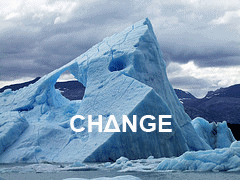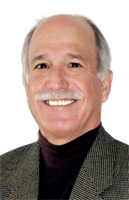
In the wider world, leadership and leading change are virtually synonymous. With increased competition, the ability to change rarely happens as fast as we’d like.
For example, how many times have you:
- Solicited input to define a change only to find that while everyone supports change, there are multiple opinions of what it should be and how to get there?
- Once launched, those who initially supported your plans are now unwilling to commit time and resources?
- After integrating everyone’s opinion prior to launch, you’re now getting bad press about the change?
- The change effort started off well but it’s stalled and people’s attention is moving on?
This occurs when leaders define and implement change without understanding what people are getting out of the current situation. Providing a fabulous vision of the future without addressing what they’ll have to give up is not enough. That requires them to place more trust in you and the change than they have in their own experience. Not going to happen.
To keep from spinning your wheels, this post will show you how to design and implement change by using the same thinking that leading design firms such as IDEO, Frog and D2M employ to create a rich understanding of user needs.
Best practice design starts with in-depth user studies. Ethnography, in the syntax of product design, is the study of how people use products and services in the course of their daily lives. Unlike focus groups or interviews which take place in a room apart from the product or service, ethnographers silently observe real-life situations with people using current products or doing the jobs in which they could be used. Ethnographers use their observations to form alternate hypothesis about why people either take an action or fail to do something that they might expect.
Ethnography is powerful because it:
- Focuses is on the users’ “job”
- Covers the job from beginning to end
- Captures other forces that influence use such as noise, distractions, physical impediments, etc.
- Sticks with observable facts whereas our minds imagine, prejudge, even lie
- Creates a data base that one can always go back to and query “what did they do?”
Creating change has to overcome the same hurdles as a new product or service. In fact, one could argue that change is the most vital leadership “product”. Market research on technology adoption cycles illustrates that the early adopters of any new product or service account for less than 10% of the total market. Volume purchases require existing users to abandon their current product or service for the new technology.
In the case of change, the target market is the organization, and increasingly, the wider eco-system. This system is defined by formal elements such as roles, authorities, contracts, etc. and informal elements such as “who-knows-who”, norms, influence, etc.
The formal elements are the easiest to manipulate yet, most resistance emanates from the informal elements. To understand their relative influence, it helps to visualize the organization as an iceberg. Above the surface are the formal elements yet the mass that governs most behavior are the informal elements below the surface. This combination of influences constitutes the firm’s culture.
Culture is like air in that we don’t think about it until it’s polluted even though it influences behavior all the time. Leaders stumble when they try to change the culture itself as that’s analogous to cleaning the air in Los Angeles using vacuums and giant filters. Instead, target the written and unwritten rules that are relevant to the problem at hand. Using ethnography principles inside will help you understand what people are actually doing and the complete set of rules that drive that behavior.
Here’s how you apply ethnography to leading change.
Step 1: Observe: Don’t talk and be as invisible as possible. Put yourself in forums that where you can observe how people operate today.
- Take detailed notes of what you see; avoid conclusions or inferences
- If you begin to form conclusions; write them down and then let go of them!
- Look for what’s missing: that which you expected to happen but didn’t
Step 2: Use multiple lenses
- For every actor or action that steps out, there is a background or context that gives birth to that. Consciously switch your focus back and forth between the foreground action and the background context. What causes action to emerge? What retards it?
- What are the different motivations you might infer from the observed actions? For example, look at the situation through a power lens. Who follows and who is followed? Why?
Step 3: Stand in different places
- Alternate looking at the system from the individual, group and total system perspective
- Put yourself in customer, partner, boss, subordinate and supplier positions
Step 4: Watch for repeating patterns
- What causes deliberations to expand or contract?
- How is hard and soft evidence embraced, verified and used?
- Who are the linking nodes, recruiters and deciders in this human network?
Step 5: Capture surprises
- What changes the rhythm, excites or inflames people?
- What causes people to shut down?
Immediately after you’re done and based solely on your observations, take thirty minutes to answer:
- What business are they in and where are they headed?
- What are the rules of behavior?
- What rewards does the current system provide for today’s behavior?
Answering these questions will give you the same information about your culture that user studies provide designers. Your next step is to develop multiple alternatives; or prototype change strategies. Keep in mind that an earmark of great design is elegant simplicity. Based on what you’ve seen, ask yourself what would extract the maximum amount of improvement with the least change? With that in hand, keep your attention on removing resistance to change by preserving what people are getting from today’s approach.
There is no larger or more difficult market a leader faces one’s own organization. Using these tools of design, leaders can accelerate their understanding and success penetrating that market.

 I'm Christopher Meyer - author of Fast Cycle Time, Relentless Growth and several Harvard Business Review articles.
I'm Christopher Meyer - author of Fast Cycle Time, Relentless Growth and several Harvard Business Review articles. 